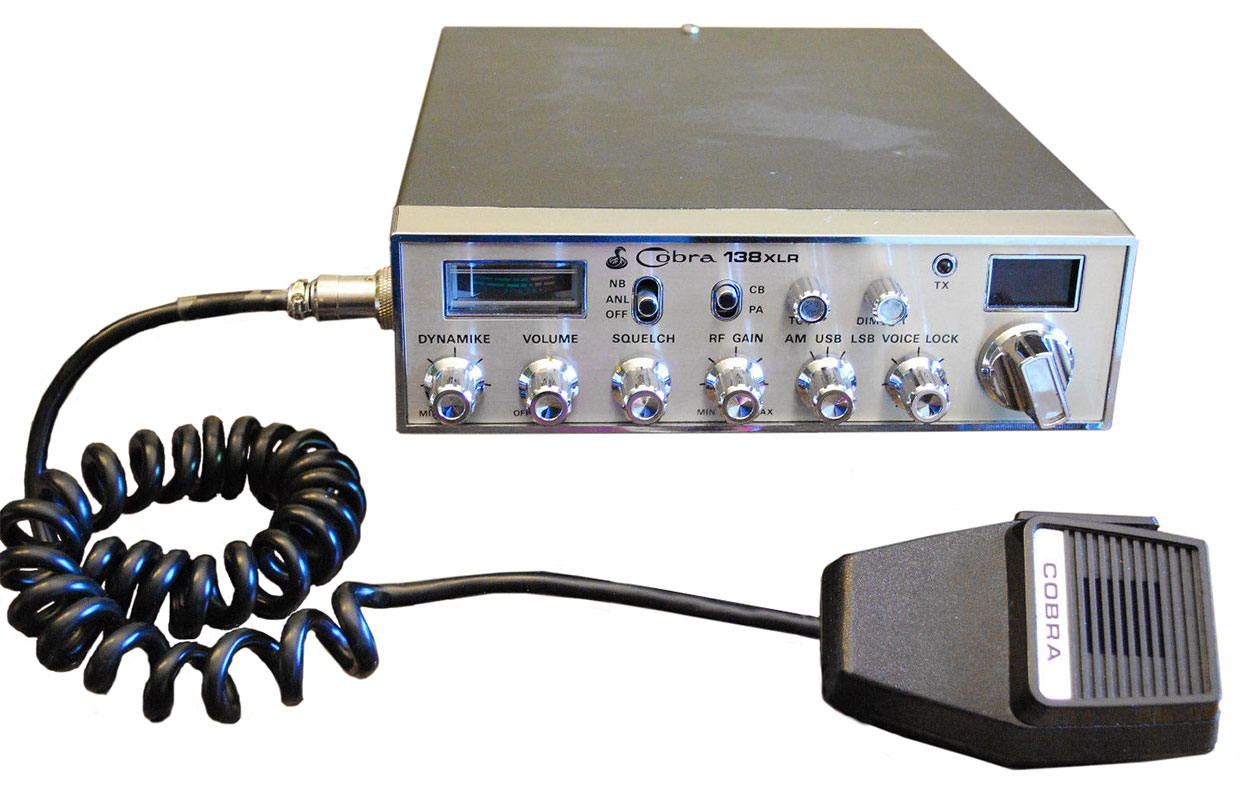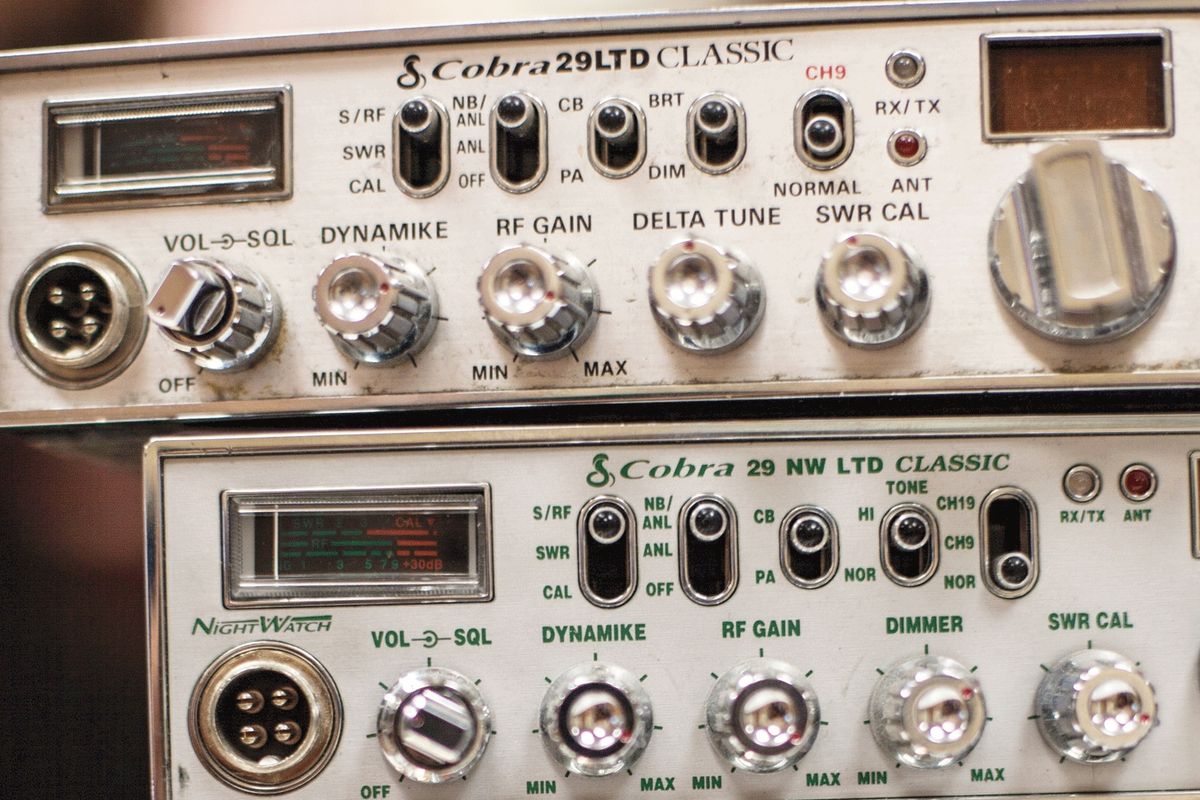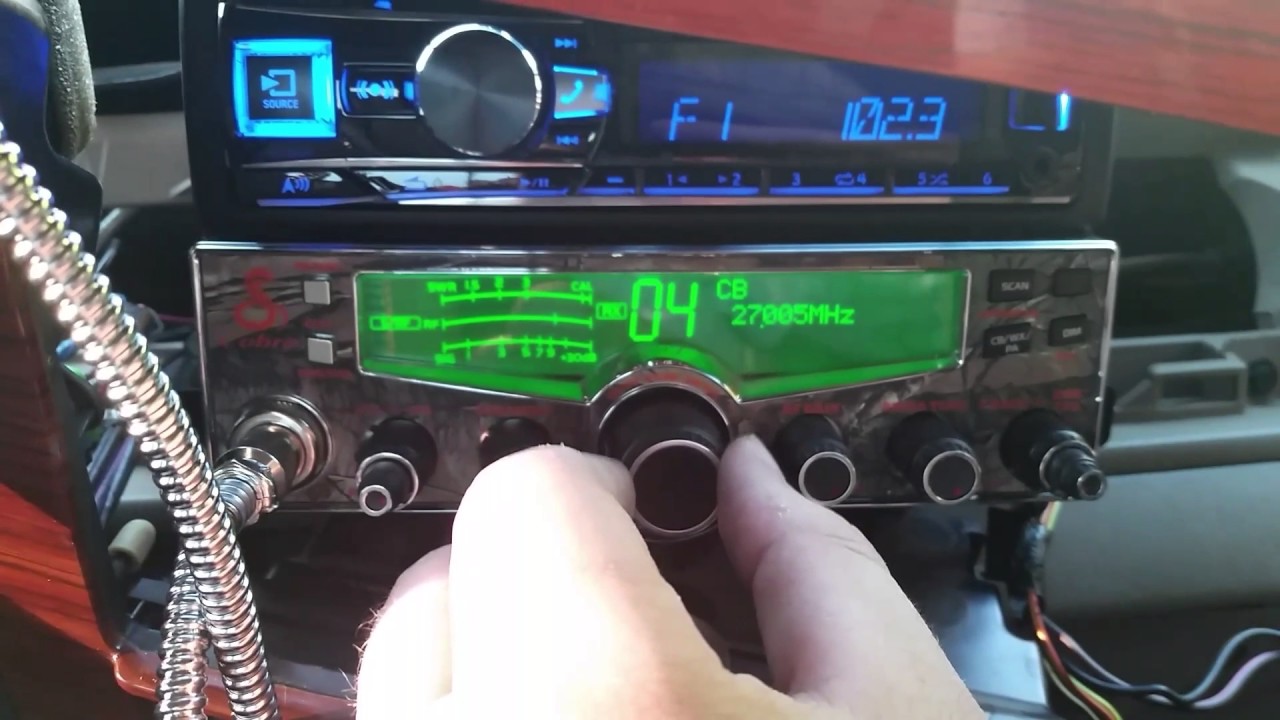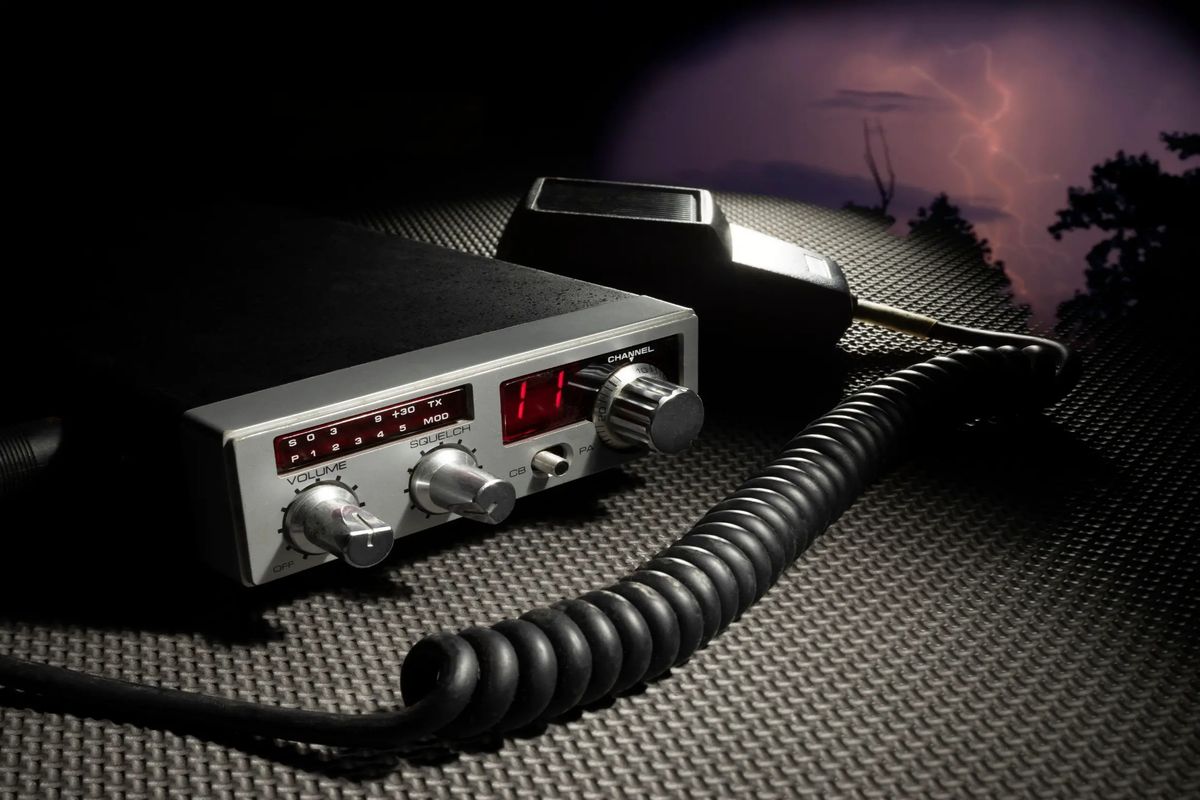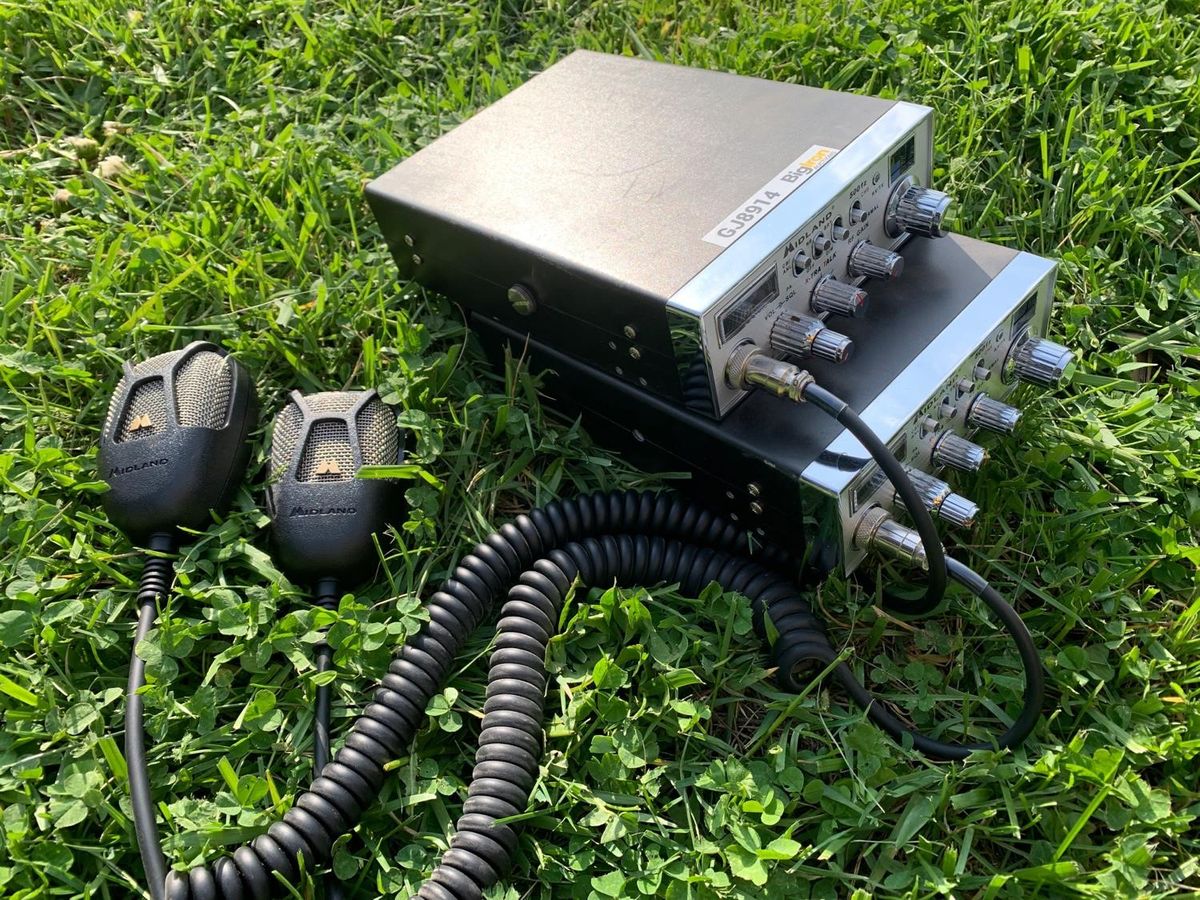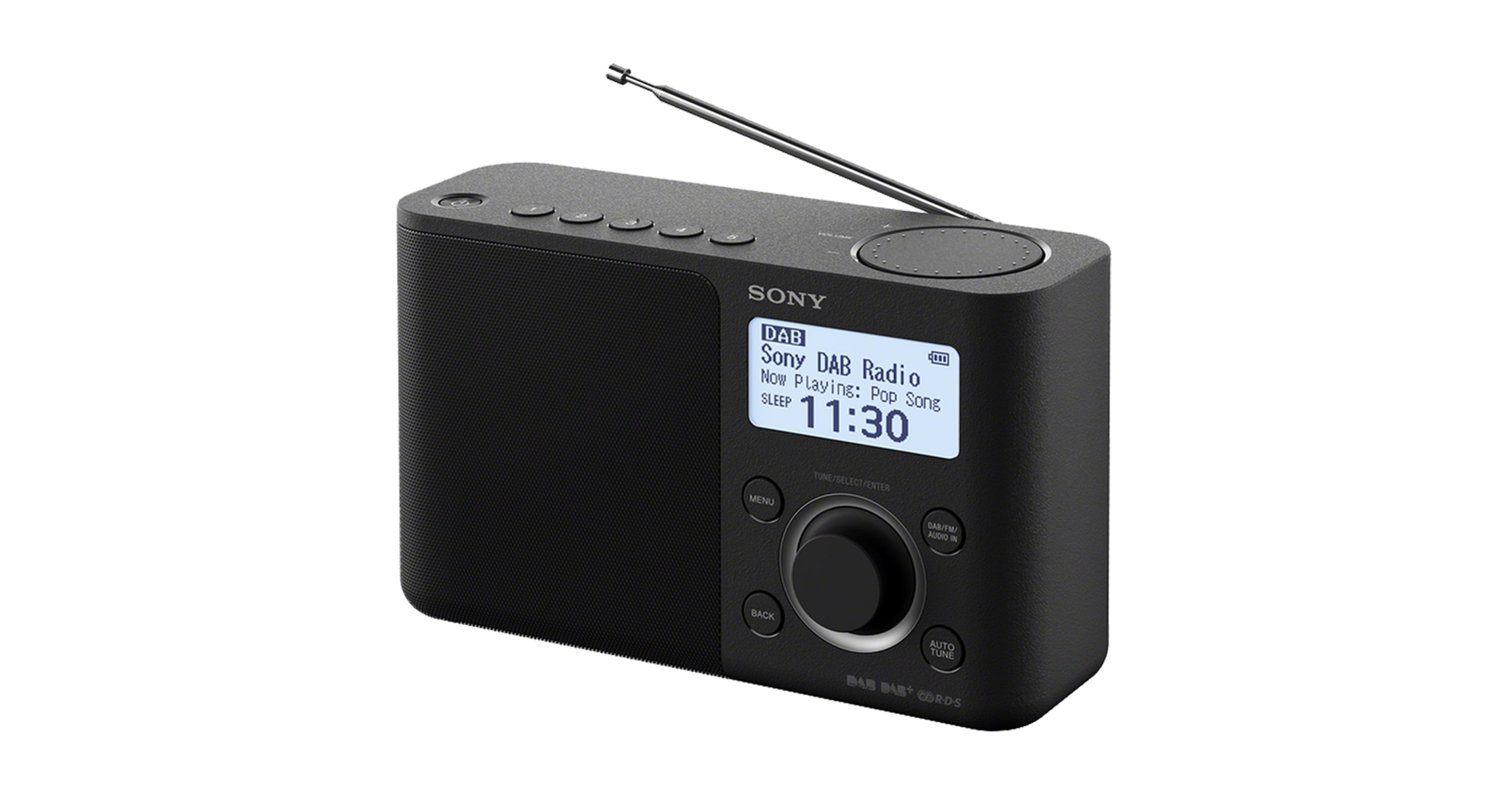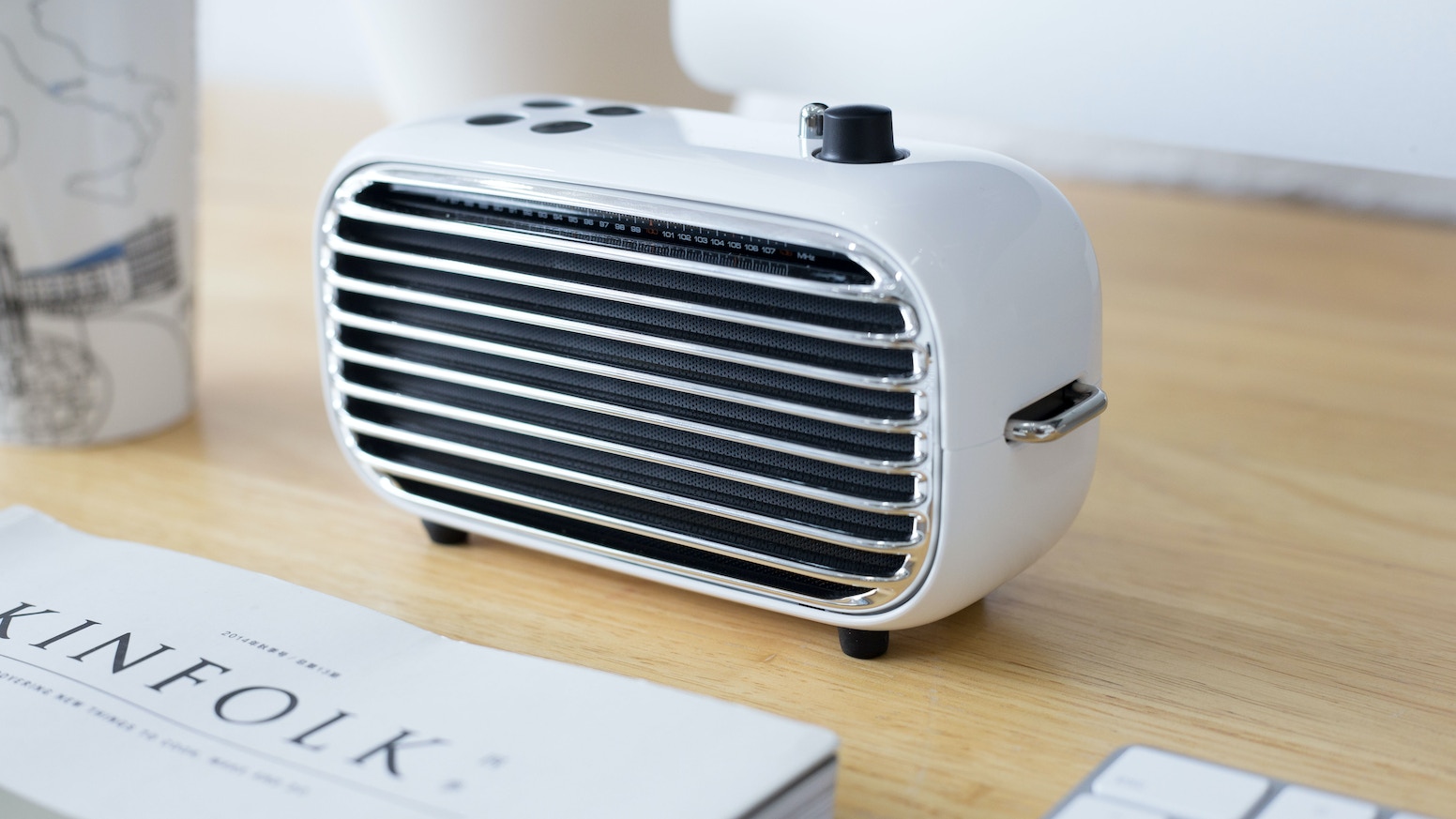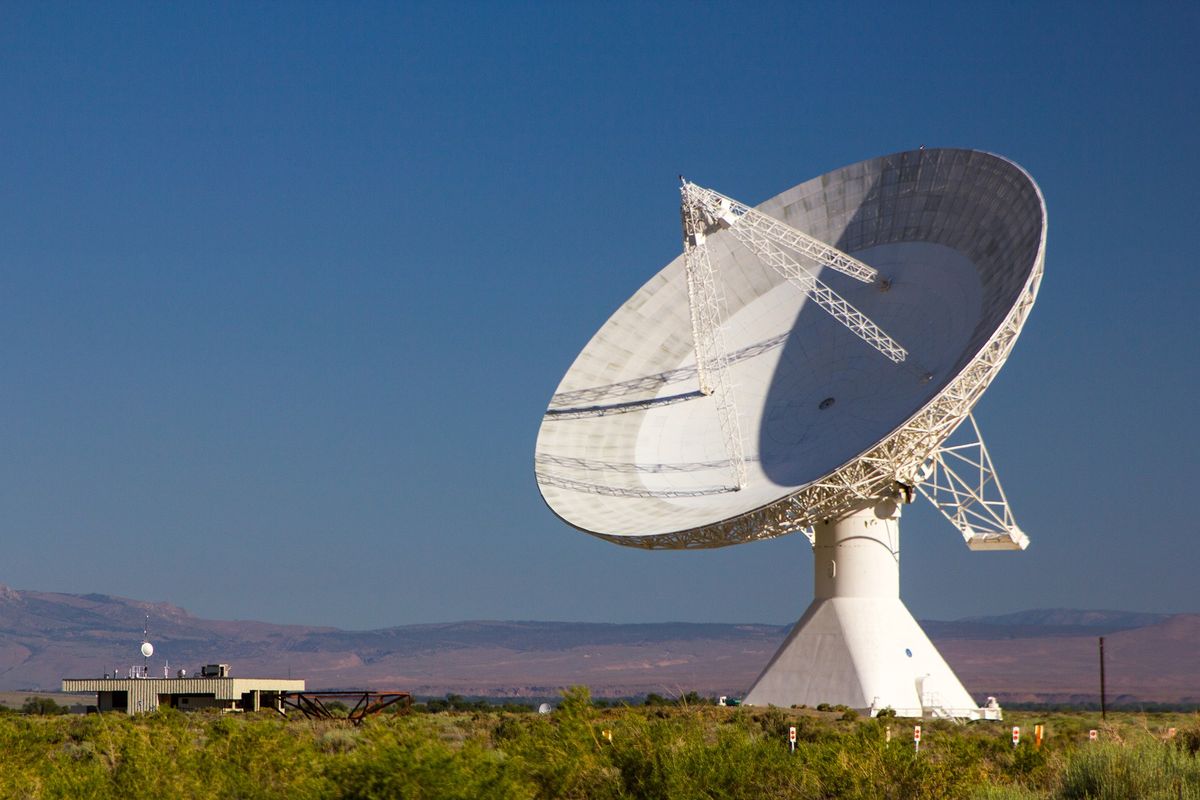Home>Devices & Equipment>Radio>What Is Squelch On CB Radio
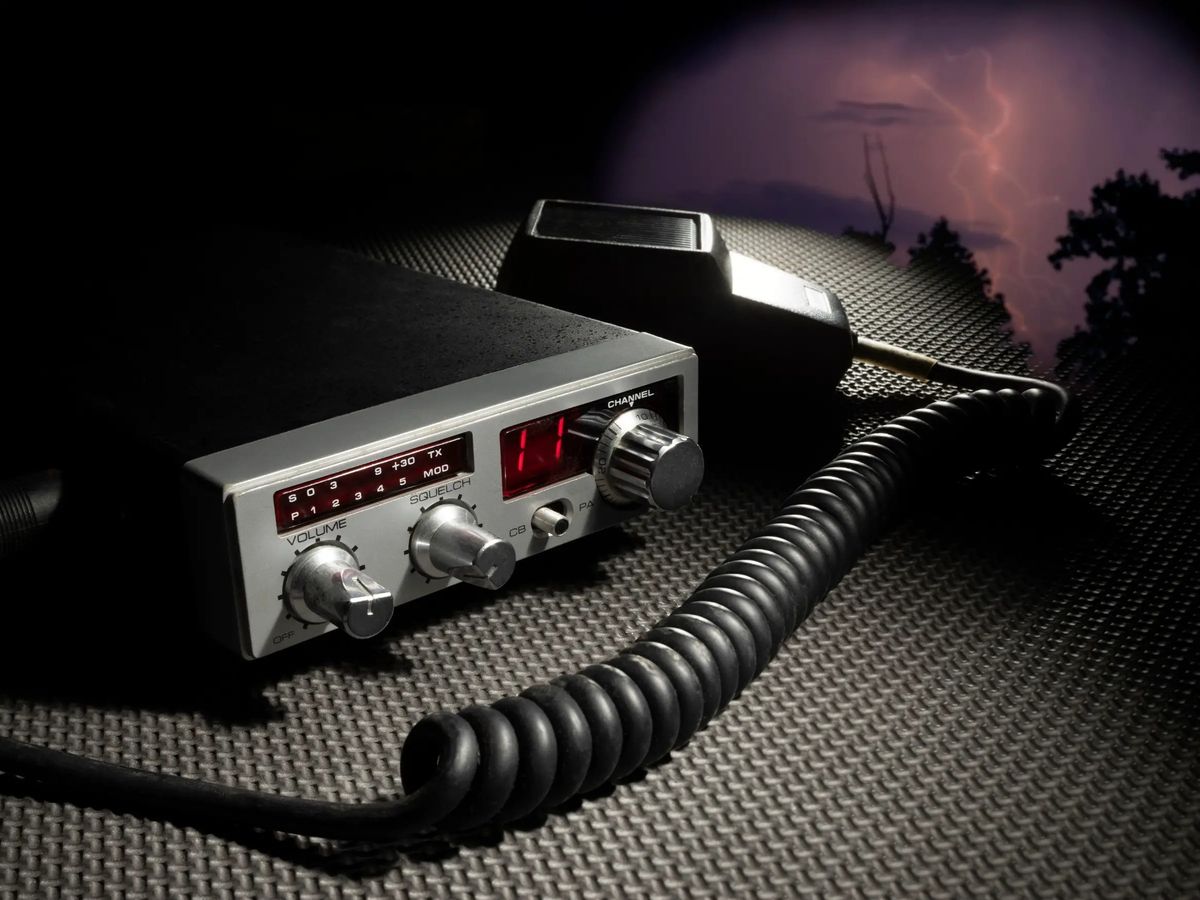

Radio
What Is Squelch On CB Radio
Modified: January 22, 2024
Discover what squelch is on CB radio and how it enhances your radio experience. Learn how to adjust squelch settings for optimal radio performance.
(Many of the links in this article redirect to a specific reviewed product. Your purchase of these products through affiliate links helps to generate commission for AudioLover.com, at no extra cost. Learn more)
Table of Contents
Introduction
Radio has been a cornerstone of communication for decades, serving as a reliable means of transmitting and receiving information across vast distances. One specific branch of radio communication that has gained popularity is CB (Citizens Band) radio. CB radios are commonly used for personal and professional purposes, allowing individuals to communicate with each other over short distances.
While CB radios offer a convenient way to stay connected, there can be challenges when it comes to the clarity of the received signals. This is where a handy feature called “squelch” comes into play. Squelch acts as a gatekeeper, ensuring that only clear and relevant transmissions are heard.
In this article, we will delve into the concept of squelch on CB radios, understanding its purpose, how it works, the different types of squelch controls, how to adjust the settings, the benefits of using squelch, as well as common issues and troubleshooting.
So, if you’ve ever wondered what that squelch knob or button on your CB radio actually does, get ready to dive in and unlock the secrets of this vital feature.
Definition of Squelch
Squelch is a feature found in CB radios and other communication devices that helps in filtering out unwanted background noise, interference, and weak signals. It serves as a noise gate, blocking out weak or irrelevant transmissions to ensure that only clear and strong signals are received and heard.
Think of squelch as a virtual gatekeeper that opens the line of communication only when it detects a signal above a certain threshold. When the squelch control is set too low, the radio will pick up even the faintest of signals, including background noise and static. On the other hand, when the squelch control is set too high, it may block out weak but important transmissions.
The purpose of squelch is to strike a balance between blocking out unwanted noise and ensuring that important messages can still be received. It helps in improving the overall clarity and reliability of radio communication, especially in busy or noisy environments.
With the squelch feature engaged, users can enjoy clearer audio quality, reduced background noise, and enhanced communication efficiency. Whether you’re using a CB radio for recreational purposes, or as part of your job, understanding and properly utilizing the squelch function will greatly enhance your experience and effectiveness.
Purpose of Squelch on CB Radio
The primary purpose of squelch on a CB radio is to eliminate unwanted noise and interference, ensuring that only clear and relevant transmissions are heard. It acts as a gatekeeper, allowing the radio to remain silent until a signal above a certain threshold is received. This threshold is set by the squelch control.
One of the key benefits of squelch is that it helps in reducing background noise, such as static, hissing, or other forms of interference. In busy environments, there may be multiple simultaneous transmissions or ambient noise that can make it difficult to discern important messages. By setting the appropriate squelch level, the radio can filter out unwanted noise and prioritize clear and strong signals.
Another important purpose of squelch is to conserve power. When the squelch control is properly adjusted, the radio will only activate the speaker and consume power when a signal above the threshold is detected. This helps in extending the overall battery life and optimizing the efficiency of the radio.
Squelch also plays a crucial role in ensuring efficient communication within a group. By reducing background noise and filtering out weak signals, squelch allows for clearer and more concise transmissions, increasing the overall effectiveness of communication. This is especially important for professional applications where clear and reliable communication is essential, such as in the trucking industry or emergency services.
Overall, the purpose of squelch on a CB radio is to enhance the clarity, reliability, and efficiency of communication. It helps in filtering out unwanted noise and interference, conserves power, and ensures that important messages are heard loud and clear. Understanding and effectively utilizing the squelch function is vital for a seamless and enjoyable CB radio experience.
How Squelch Works
Squelch is a feature that operates based on a simple principle: it compares the strength of the received signal to a pre-set threshold. When the received signal strength surpasses this threshold, the squelch opens and allows the audio to be heard. But when the signal falls below the threshold, the squelch closes, muting the audio to eliminate unwanted noise.
When the squelch control is set at its minimum level, it means the threshold is set very low, allowing even weak signals to be heard. This can be useful when you want to pick up faint transmissions, but it also means that more background noise and interference will be audible. On the other hand, when the squelch control is turned up to its maximum level, the threshold is set higher, reducing background noise but potentially blocking weaker signals.
Modern CB radios usually have an automatic squelch feature, commonly known as ASQ (Automatic Squelch Control). With ASQ enabled, the radio will automatically adjust the squelch threshold based on the received signal strength. This ensures that the threshold remains optimal for a clear reception without manual adjustments.
The squelch circuitry essentially functions like a gate that opens and closes based on the received signal strength. When a signal is above the set threshold, the gate opens, allowing the audio to pass through. When the signal falls below the threshold, the gate closes, muting any background noise or weak transmissions.
It’s important to note that squelch operates at the receiver end of the radio, meaning it has no impact on the transmission itself. It only affects what is heard through the speaker or headphone of the receiving radio. Squelch does not improve the range or strength of transmission; its purpose is solely to ensure clear reception by filtering out unwanted noise and interference.
In summary, squelch works by comparing the strength of the received signal to a pre-set threshold. If the signal is strong enough, the squelch opens and allows the audio to be heard. When the signal falls below the threshold, the squelch closes, muting the audio to eliminate unwanted noise. Manual or automatic controls can be used to adjust the squelch level to achieve the desired balance between clarity and background noise.
Types of Squelch Controls
CB radios offer various types of squelch controls that allow users to customize and fine-tune the squelch settings according to their preferences and specific needs. These different types of squelch controls include:
1. Manual Squelch Control: This is the most common type of squelch control found on CB radios. It allows users to manually adjust the squelch threshold by turning a knob or pressing buttons. By turning the control clockwise, the squelch threshold is raised, reducing background noise but potentially blocking weaker signals. Turning it counterclockwise decreases the threshold, making it more sensitive to weaker signals but also increasing the amount of background noise being heard.
2. Automatic Squelch Control (ASQ): ASQ is a convenient feature found on many modern CB radios. When activated, it automatically adjusts the squelch threshold based on the received signal strength. This ensures that the optimal threshold is set for clear reception without requiring constant manual adjustments. ASQ is particularly useful in situations where the radio user is on the move and signal conditions may fluctuate.
3. Digital Squelch Control: Some advanced CB radios utilize digital signal processing technology to offer more precise and reliable squelch control. Digital squelch ensures a cleaner and more accurate differentiation between noise and signals, resulting in improved noise filtering and minimized false squelch openings.
4. Tone Squelch Control: Tone squelch, also known as CTCSS (Continuous Tone-Coded Squelch System) or PL (Private Line), is a feature that adds an inaudible sub-audible tone to the transmitted signal. The receiving radio is set to only unmute when it receives the specific tone associated with the transmitting radio. This allows for selective communication and minimizes the chances of inadvertently receiving transmissions from other radios.
5. DCS (Digital Coded Squelch): Similar to CTCSS, DCS is a digital version of tone squelch. Instead of using analog tones, DCS utilizes digital codes to selectively open the squelch on the receiving radio. This provides enhanced privacy and reduces the chances of interference from other radios using different codes.
These different types of squelch controls offer users a range of options to adjust and fine-tune their CB radios’ squelch settings based on their specific needs, environmental conditions, and desired level of noise filtering. Whether using manual controls, automatic features, or advanced digital squelch systems, these controls provide flexibility and customization to optimize the clarity and efficiency of CB radio communication.
Adjusting Squelch Settings
Adjusting the squelch settings on a CB radio is important to strike the right balance between filtering out unwanted background noise and ensuring clear reception of important transmissions. Here are some steps to help you adjust the squelch settings effectively:
1. Identify the Squelch Control: Locate the squelch control on your CB radio. It is often labeled as “SQ” or “Squelch” and is typically a knob or a button that you can rotate or press.
2. Set the Control to Minimum: Start by setting the squelch control to its minimum level. This will ensure that the radio is at its most sensitive state, allowing you to pick up even weak signals but also potentially introducing more background noise and interference.
3. Test the Squelch Level: Tune into a channel where there is no ongoing conversation or signal. Gradually increase the squelch control until the background noise is muted, and you only hear audio when a transmission is received. This indicates that the squelch threshold is set to filter out weaker signals and unwanted noise.
4. Fine-Tune the Settings: If necessary, make small adjustments to find the optimal squelch level. Increase the control slightly if you find that some weak but important transmissions are being blocked. Conversely, decrease the control if you notice excessive background noise or if you want to increase the sensitivity to weaker signals.
5. Utilize Feedback from Other Users: If you’re part of a CB radio community or group, seek feedback from fellow users to help you determine the ideal squelch level. They may have experience with specific noise levels in your area or recommendations for achieving the best performance.
6. Consider Ambient Noise Conditions: Keep in mind the environment in which you’ll be using the CB radio. If you’re in a noisy or busy area, you may need to set the squelch control at a higher level to block out more background noise. In quieter settings, a lower squelch level may be suitable to avoid missing weaker transmissions.
7. Utilize Automatic Squelch Control (ASQ): If your CB radio has an ASQ feature, you can enable it to have the radio automatically adjust the squelch threshold based on the received signal strength. This can be particularly beneficial if you’re frequently changing locations or operating in areas with fluctuating signal conditions.
Remember to periodically check and readjust the squelch settings as signal conditions, locations, or ambient noise levels change. Finding the right squelch level will ensure that you can hear important transmissions clearly while minimizing unwanted background noise and interference, enhancing your overall CB radio experience.
Benefits of Using Squelch
Using the squelch feature on a CB radio offers several notable benefits that improve the overall communication experience:
1. Noise Reduction: One of the primary benefits of using squelch is the reduction of background noise. By setting the squelch level appropriately, the radio filters out unwanted static, hissing, and other forms of interference. This allows for clearer reception and minimizes distractions caused by background noise, improving the overall audio quality.
2. Enhanced Clarity: Squelch ensures that only relevant and strong signals are heard, reducing the chance of missing important transmissions. By blocking weaker signals and background noise, squelch enhances the clarity of received audio, making it easier to understand and respond to messages.
3. Improved Communication Efficiency: Squelch enables more efficient and effective communication. By muting unwanted noise and weak transmissions, it allows for clearer and more concise conversations. This is particularly important in busy or noisy environments where multiple transmissions may be occurring simultaneously. Squelch helps prioritize and amplify important messages, reducing confusion and improving overall communication efficiency.
4. Battery Life Optimization: When the squelch threshold is properly set, the radio only activates the speaker or headphone when a signal above the threshold is detected. This helps conserve battery power and extends the overall battery life of the CB radio. It is especially beneficial for longer trips or situations where a continuous power source may be limited.
5. Reduced Listener Fatigue: Excessive background noise can cause listener fatigue, making it challenging to focus on important transmissions. By using squelch to minimize unwanted noise, listeners experience less strain and fatigue, leading to improved concentration and a more enjoyable communication experience.
6. Privacy and Selective Communication: Certain types of squelch controls, such as tone squelch (CTCSS) or digital coded squelch (DCS), allow for selective communication by using specific tones or codes. This adds a layer of privacy and security, ensuring that only radios with the corresponding tones or codes can receive the transmissions. It is particularly useful in group communication scenarios or when sensitive information needs to be shared.
Overall, using squelch on a CB radio enhances the communication experience by reducing background noise, improving clarity, optimizing battery life, and increasing communication efficiency. Whether for personal or professional use, leveraging the benefits of squelch enhances the effectiveness and enjoyment of CB radio communication.
Common Issues with Squelch
While squelch is a valuable feature on CB radios, there are some common issues that users may encounter. Knowing how to identify and address these issues can help ensure the optimal functioning of the squelch system. Here are some of the most common issues with squelch:
1. False Squelch Openings: Sometimes, the squelch may open even when there is no signal or transmission. This can be caused by electromagnetic interference (EMI) from nearby electronic devices, excessive background noise, or an incorrect squelch setting. Adjusting the squelch control or relocating the radio away from potential sources of interference can help mitigate this problem.
2. Weak Signal Blocking: Incorrectly adjusting the squelch control to a high setting may result in blocking weak but important signals. This can happen when the squelch threshold is set too close to the noise level, effectively muting weaker transmissions. To address this, gradually lower the squelch control to allow for the reception of weaker signals while still minimizing background noise.
3. Overly Sensitive Squelch: On the other hand, setting the squelch control too low may result in the radio picking up even the faintest signals, including irrelevant background noise and distant transmissions. This can lead to a constant hissing or static sound. Adjusting the squelch control to a slightly higher level can help reduce the sensitivity and filter out unnecessary noise.
4. Manual Adjustments Required: Some CB radios require manual squelch adjustments as signal conditions change. This can be inconvenient, especially in environments where signal strength fluctuates. Utilizing CB radios with automatic squelch control (ASQ) can eliminate the need for constant manual adjustments by automatically adapting to changing signal conditions.
5. Interference from Nearby Radios: CB radios operating within close proximity to each other can sometimes experience interference. This can result in false squelch openings or conflicting signals. To minimize interference, use different channels or employ features like tone squelch (CTCSS) or digital coded squelch (DCS) to ensure only intended transmissions are received.
By being aware of these common issues with squelch and implementing appropriate measures, CB radio users can optimize their squelch settings and ensure clear and reliable communication.
Troubleshooting Squelch Problems
Encountering squelch problems on your CB radio can be frustrating, but there are several troubleshooting steps you can take to resolve the issues. Here are some common squelch problems and their suggested solutions:
1. False Squelch Openings: If your squelch is consistently opening when there is no signal, try adjusting the squelch control slightly higher. This helps reduce the sensitivity and filter out unnecessary noise. Additionally, check for any sources of electromagnetic interference (EMI) near the radio, such as nearby electronic devices. Relocating the radio away from these sources may help resolve the issue.
2. Weak Signal Blocking: If you’re missing weak but important signals, it may indicate that the squelch control is set too high. Gradually lower the squelch control to allow for the reception of weaker signals while still minimizing background noise. Finding the right balance is crucial to prevent blocking weaker transmissions.
3. Hissing or Static Noise: Overly sensitive squelch settings can cause constant hissing or static sounds. Adjust the squelch control slightly higher to reduce the sensitivity and eliminate the unwanted noise. Be cautious not to set it too high, as this could cause weak signal blocking.
4. Utilize Automatic Squelch Control: If your CB radio has an automatic squelch control (ASQ) feature, enable it to let the radio automatically adjust the squelch threshold based on the received signal strength. ASQ can help eliminate the need for constant manual adjustments, ensuring optimal squelch settings in changing signal conditions.
5. Interference from Nearby Radios: When operating close to other CB radios, interference may occur. To minimize interference, try changing to a different channel that is less congested. Alternatively, consider using tone squelch (CTCSS) or digital coded squelch (DCS) features, which allow selective communication and reduce the chances of interference from nearby radios.
6. Check Antenna and Connections: A poorly connected or faulty antenna can impact squelch performance. Ensure that the antenna is properly connected and in good condition. Check for any loose or damaged connections and make the necessary repairs or replacements.
7. Consult the User Manual: If you’re experiencing persistent squelch problems, refer to the user manual specific to your CB radio model. The manual may provide additional troubleshooting steps or recommendations tailored to your equipment.
If the troubleshooting steps do not resolve the squelch problems, it may indicate a more significant issue with your CB radio. In such cases, it is advisable to consult a professional technician or the manufacturer for further assistance.
Conclusion
Squelch is a crucial feature on CB radios that helps in filtering out unwanted noise and interference, ensuring clear and reliable communication. By setting the appropriate squelch level, users can enhance the clarity of received signals, reduce background noise, and optimize the efficiency of communication.
Throughout this article, we explored various aspects of squelch, including its definition, purpose, how it works, different types of squelch controls, adjusting squelch settings, and the benefits it offers. We also discussed common issues that users may encounter with squelch and provided troubleshooting steps to help resolve these problems.
By understanding and utilizing the squelch feature effectively, CB radio users can enjoy improved audio quality, enhanced communication efficiency, and reduced listener fatigue. It allows for clearer reception in noisy environments, conserves battery life, and enables selective communication through features such as tone squelch or digital coded squelch.
Remember, adjusting the squelch settings may require some experimentation and fine-tuning to find the optimal level for your specific needs and signal conditions. Regularly checking and readjusting the squelch settings as needed will ensure optimal performance and a seamless communication experience.
So, the next time you encounter static, interference, or unwanted noise on your CB radio, don’t forget to utilize the power of squelch to filter out the distractions and enjoy clear, effective communication.

